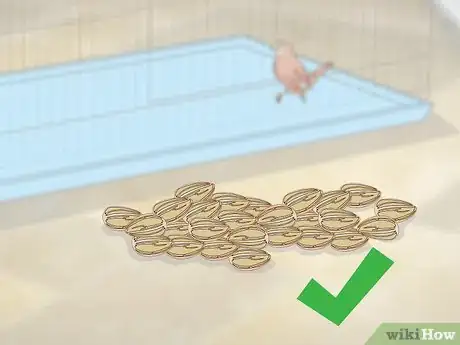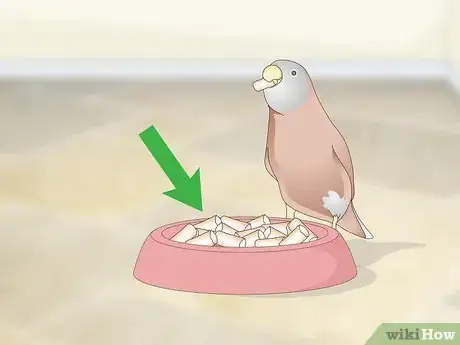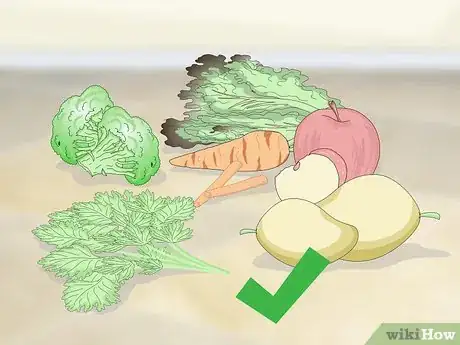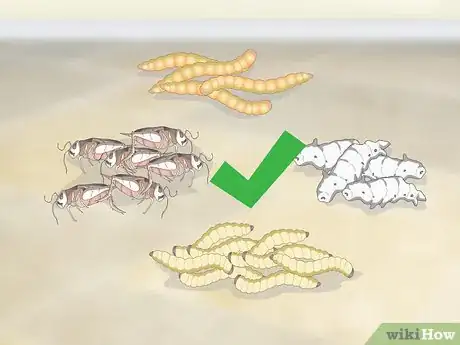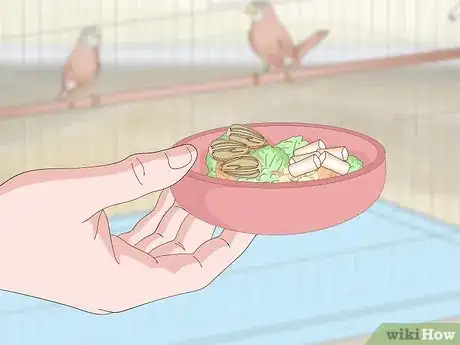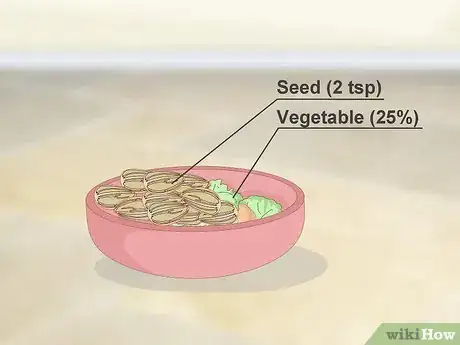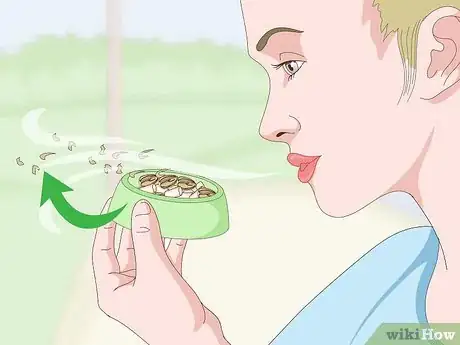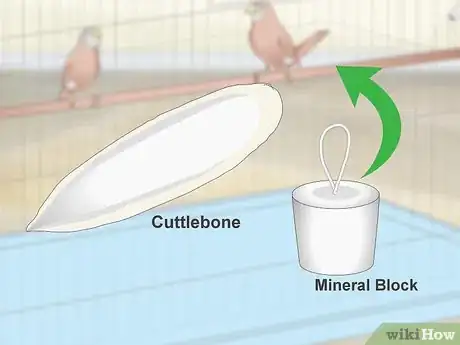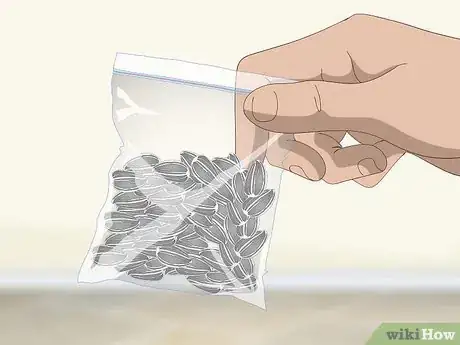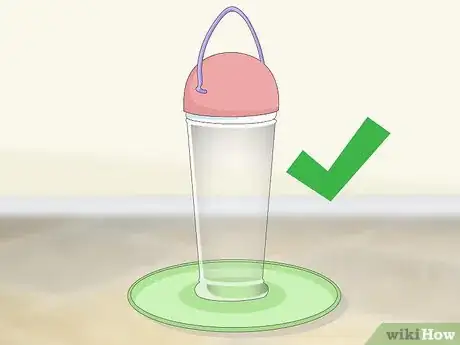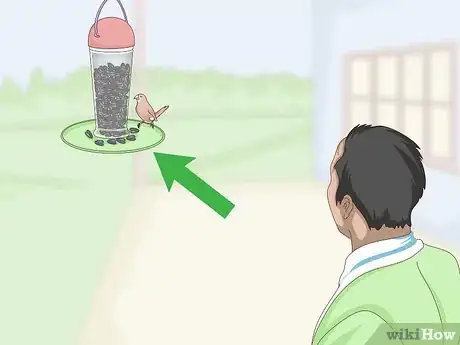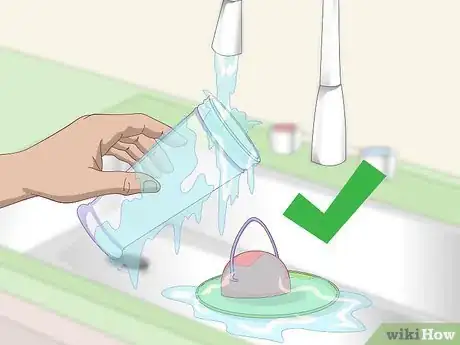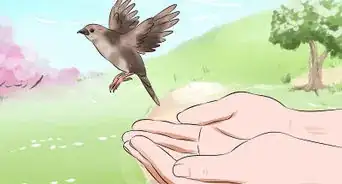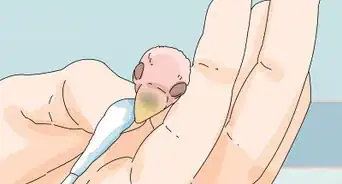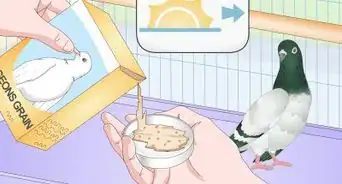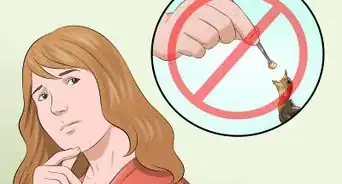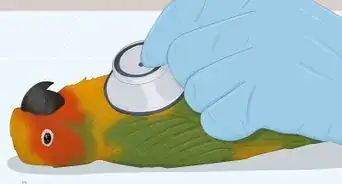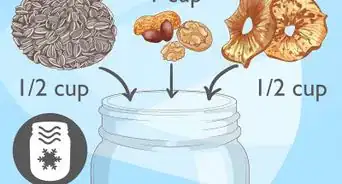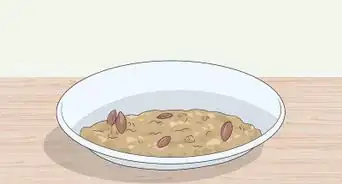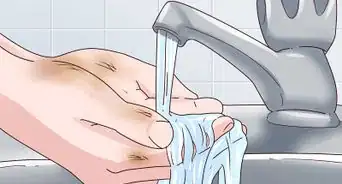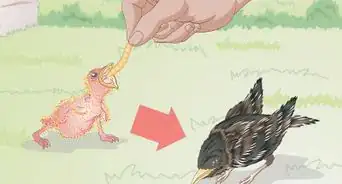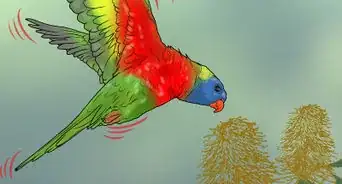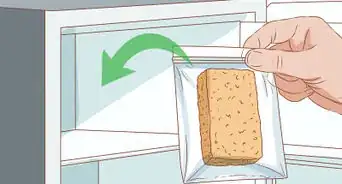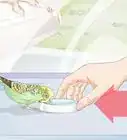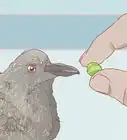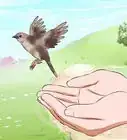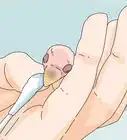This article was co-authored by Deanne Pawlisch, CVT, MA. Deanne Pawlisch is a Certified Veterinary Technician, who does corporate training for veterinary practices and has taught at the NAVTA-approved Veterinary Assistant Program at the Harper College in Illinois and in 2011 was elected to the board of the Veterinary Emergency and Critical Care Foundation. Deanne has been a Board Member of the Veterinary Emergency and Critical Care Foundation in San Antonio, Texas since 2011. She holds a BS in Anthropology from Loyola University and an MA in Anthropology from Northern Illinois University.
This article has been viewed 26,912 times.
Finches are wonderful little birds that are fun to watch outside or raise indoors, where they can be in a climate-controlled environment. If you have them as pets, you need to make sure to feed them a balanced diet. This diet needs to be varied, in order to provide for all of their nutritional needs. If you want to feed wild finches, you need to provide the right kind of food and the right kind of feeder to attract them to your yard.
Steps
Picking the Right Food for Pet Finches
-
1Purchase bird seed. There are a wide variety of commercial bird seed mixes that are designed for finches. It is important to get a mix that is made specifically for finches, as other mixes contain seeds that are too big for a finch to eat. Seeds that finches typically like include millet, canary grass seed, and thistle.[1]
- In order to minimize seed waste, figure out what type of seeds your finches prefer and create your own mix of those specific seeds. If you only give your birds the seeds they will eat, you will throw out fewer seeds when you clean the bird's food holders and replace the bird's food every day.
-
2Consider feeding your finches pellets. In order to give your finches more complete nutrition, some finch owners choose to transition their birds onto pellets. These pellets are created to provide for all of a finches nutritional needs, whereas a diet of seeds requires that you supplement quite a bit with fruits, vegetables, and nutritional supplements.[2]
- Putting your finches on pellets requires that you transition their diet gradually. Over the course of 4 to 8 weeks you will need to gradually reduce the seeds you offer. Make fresh pellets available in the food bowl at all times. Provide seeds for a limited period of time each day, slowly reducing the amount of seeds offered.
- If you mix seeds and nuts together, your bird will pick out the seeds but leave the pellets.
- If you do it too quickly, the finches will not eat the pellets and will begin to suffer from malnutrition.
Advertisement -
3Give the finches fruits and vegetables. Finches can enjoy a wide variety of fruits and vegetables. These give the bird's diet variety and they provide vitamins and minerals that seeds cannot. Some fruits and vegetables to cut into 1/2 inch (1.27 centimeter) pieces and offer to your finches include:[3]
- Apple
- Beets
- Broccoli
- Carrot
- Dandelion greens
- Mango
- Parsley
- Sweet potato
- Zucchini
-
4Feed live foods to certain finch species. There are certain types of finches that need to eat insects when they are breeding and they like them as a snack at other times. These include waxbill finches, owl finches, and Lady Gouldian finches. The insects that are best to feed insect-eating finches include:[4]
- Mealworms
- Wax worms
- Crickets
- Silkworms
- White worms
Feeding Pet Finches
-
1Feed your finch a wide variety of foods. In order to give finches a balanced diet, they should be fed a combination of seeds, pellets, vegetables, and fruits. This will help them to get all the nutrition they need.[5]
- It is imperative that you remember that a balanced diet includes a bit of all of these components.
-
2Give your finches the right amount of food. Each finch should be fed about 1.5 to 2 teaspoons of seed every day. In addition to this seed, you should make fruits and vegetables about twenty to twenty-five percent of their diet.[6]
- If your finches are eating too much seed, offer less of it. If you give them more vegetables and less seeds, they will make up the difference with the vegetables.
-
3Clean empty hulls out of the food dish. Finches tend to eat whatever is on the top of their food dish. If the top of it is covered in empty hulls, then the finch may not get the nutrition it needs. To avoid this, take the bird's dish out of its cage daily and blow the empty hulls off the top.[7]
- Cleaning empty hulls out of the food dish daily will also help to keep the bottom of the cage cleaner.
-
4Provide supplements. In addition to a varied diet of seeds, pellets, and fruits and vegetables, your finches may require supplements. Many finch owners provide their birds with calcium supplements in the form of cuttlebones or mineral blocks.[8]
- Discuss the need for supplements with your veterinarian.
Feeding Wild Finches
-
1Purchase wild bird food. In order to feed wild finches, you will need to purchase bird food that they like. Finches are small birds, so they tend to like small bird food, such as sunflower hearts and thistle.[9]
- Buy a product that says it is for feeding small birds or that says it is explicitly for finches.
-
2Buy a bird feeder. The type of bird feeder you get will depend on the type of food you are feeding the finches. If you have bought a small bird mix, you can typically use a traditional bird feeder that supplied food at its base. If you are feeding the finches strictly thistle, you should get a tube feeder that the birds can cling to and can eat all over.
- You can also choose to make your own bird feeder out of common household supplies, such as a plastic bottle or a tin can.
-
3Place the filled bird feeder in a safe location. When placing your feeder you should think about the safety of birds feeding at it. Keep it away from areas that predators, such as cats, frequent and away from bushes and trees they could stalk birds from.[10]
- Also keep feeders away from windows, as feeding finches can easily smack into windows while flying in to feed.
-
4Clean the feeder on a regular basis. Once you have hung the bird feeder outside and the birds have been eating out of it for a while, you should take the time to clean it out. Making sure that your feeder is clean will assure that you don't give wild finches any spoiled food and that they continue to be attracted to your feeder.[11]
- If your bird feeder becomes empty, clean it out before refilling it. Remove any spoiled food or dirt and grime and scrub it with soap and water. Make sure to dry it completely before filling it again.
Warnings
- You should only keep domesticated finches as pets. Wild finches are a different breed and should not be kept as pets.⧼thumbs_response⧽
References
- ↑ http://www.petuniversity.com/birds/canaries-finches/feeding-finches.htm
- ↑ https://vcahospitals.com/know-your-pet/finches-feeding
- ↑ http://www.petuniversity.com/birds/canaries-finches/feeding-finches.htm
- ↑ http://www.petuniversity.com/birds/canaries-finches/feeding-finches.htm
- ↑ https://vcahospitals.com/know-your-pet/finches-feeding
- ↑ https://vcahospitals.com/know-your-pet/finches-feeding
- ↑ http://www.petuniversity.com/birds/canaries-finches/feeding-finches.htm
- ↑ http://www.petuniversity.com/birds/canaries-finches/feeding-finches.htm
- ↑ http://www.humanesociety.org/animals/resources/tips/feeding_birds.html
About This Article
To give your finch a healthy diet, look for bird seed or pellets that are created specifically for finches. To supplement your finch’s diet, give it small pieces of fresh fruits and vegetables, like apples, beets, broccoli, carrots, or sweet potato. Additionally, feed it live mealworms, wax worms, crickets, silkworms, and white worms. To keep your finch’s diet balanced, feed it a variety of these foods each day. For more information from our Veterinary co-author, like how to supplement your finch’s diet with cuttlebones and mineral blocks, keep reading!
